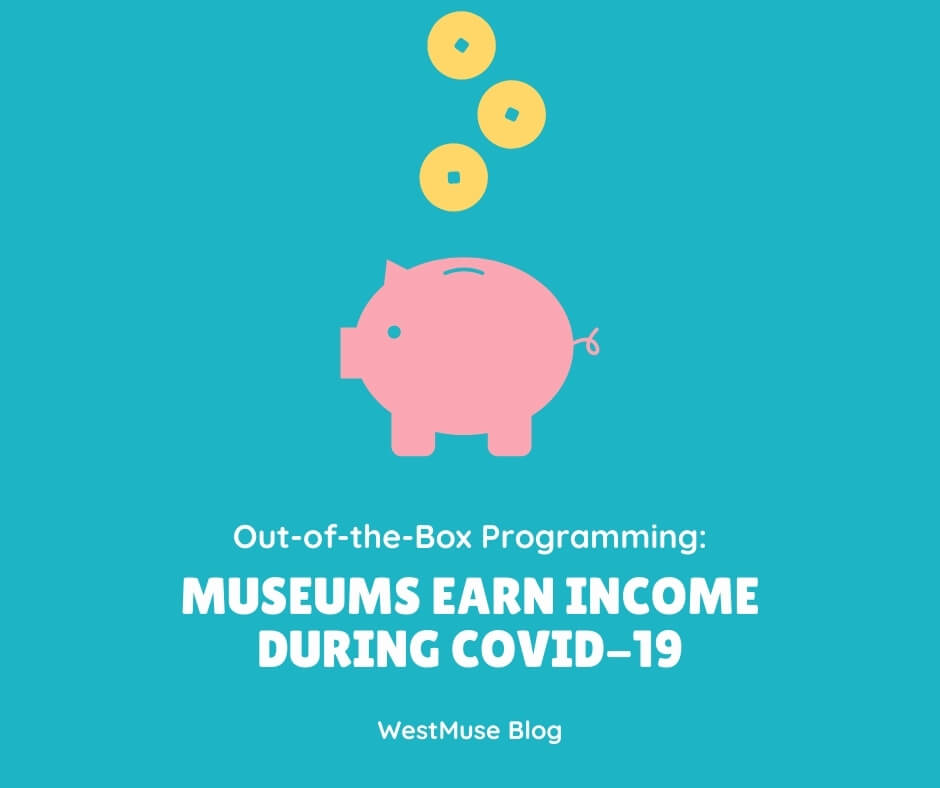 The Covid-19 pandemic has forced a near halt of the events, exhibitions, and public programming that make up the very essence of a museum. Yet, with speedy ingenuity and a little help from technology, museums continue to weather the financial storm that is 2020.
The Covid-19 pandemic has forced a near halt of the events, exhibitions, and public programming that make up the very essence of a museum. Yet, with speedy ingenuity and a little help from technology, museums continue to weather the financial storm that is 2020.
Even though museums have largely reopened across the nation, many are functioning at half-capacity, have cancelled typical events, and are seeing a major revenue loss from admission and visitor spending. According to AAM’s recently released National Survey of COVID-19 Impact on United States Museums, 75% of 760 surveyed museums stepped into their role as community educators providing virtual educational programming and resources during the pandemic. “However, two-thirds (64%) of directors predicted cuts in education, programming or other public services due to significant budget cuts.”
With the pandemic continuing to keep people at home, many institutions have embraced what digital resources they have available and adapted their programming models to virtually accumulate revenue. An example of such can be seen with the timely Future is Me virtual workshop from the Skirball Cultural Center. The workshop invites families to join exhibiting Artist Aram Han Sifuentes in creating their own capes, decorated with a worldly cause they care about. For the general price of $35 or $25 for non-members, each household will receive their own art kit filled with project materials. A limited number of free spaces are available for those experiencing financial hardship.
Another institution who has reimagined their public programming due to Covid-19 limitations is the Bowers Museum. On the Museum’s Events Calendar people have access to a variety of virtual public tours and art kits, which they can participate in for a small fee. One will also find a unique event to the Museum itself – it’s now limited-capacity outdoor film screenings with chairs placed six feet apart and face masks required.
Furthermore, AAM’s recent article Earning Income from Education Programs during COVID-19 draws attention to two other museums who have successfully reconceived their earned income models to host both virtual and in-person programs during this pandemic.
In contrast, many institutions are finding it difficult to monetize digital exhibitions, performances, events, or educational resources. Majority are instead hoping that by simply offering quality content, people will recognize the value in the material and be encouraged to donate to help keep those online resources going. A great example of this is San Diego’s New Children’s Museum’s popular #ThinkPlayCreateFromHome online resources page, in which at the bottom, they kindly ask for “supporters to consider making a tax-deductible donation to support [their] efforts and staff.” Read more about the successful efforts behind #ThinkPlayCreateFromHome in this recent Times of San Diego article.
Although these institutions are just a few of the hundreds of museums across the nation who are resourcefully adjusting their programs to earn income during this pandemic, we hope these will offer inspiration as your museum develops its own unique, revenue-generating programs and continues to operate through this unprecedented time.
COVID-19 Financial Resources & Funding for Nonprofits
- In the American Alliance of Museum’s (AAM) Finding financial relief and support (for individuals and institutions) section of their website, is a great place to start for both organizations and museum workers. There, you’ll find useful information and guidance regarding philanthropy, equity considerations for crafting financial strategies, legislation related to COVID-19 and museums, financial resources for nonprofits, financial relief for museum workers, and more.
- AAM’s Center for the Future of Museums’ TrendsWatch 2020: The Future of Financial Sustainability forecasting report ‘provides a framework for examining any museum’s financial performance and thinking about long-term strategies for financial success.’
- The National Endowment for the Humanities (NEH) offers a variety of grant program opportunities to organizations (and individuals) that work to promote the humanities. Depending on the grant, application deadlines are now through the end of 2021. Search through the NEH’s grant programs here.
- Through their CARES Act funding, the Institute of Museum and Library Services (IMLS) has created two new emergency granting programs for museums, libraries, and tribal organizations: IMLS CARES Act Grants for Museums and Libraries and IMLS CARES Act Grants for Native American/Native Hawaiian Museum and Library Services.
- Gallery Systems’ funding guide for Emergency Funding for Museums during COVID-19 will keep you informed of emergency initiatives in the United States, Canada, and United Kingdom.
Previously Recorded Webinars on Financial Funding & Generating Revenue
-
Foundations & Funding: Changes in Philanthropic Giving During COVID-19 – Cuseum, WMA, OMCA, 4Culture, + Global Philanthropic
-
Museum Lightning Talks: Generating Revenue Through Digital Content & Virtual Experiences – Cuseum
-
Accounting Tips for Nonprofits during COVID-19 era – MARCUM Accountants & Advisors
-
Finding Support: Cultural Programming in Challenging Times – International Coalition of Sites of Conscience
-
Revenue Generation Strategies for Your Museum During Coronavirus: Lessons from the Private Sector – Culture Connect
-
SBA Paycheck Protection Program Loan Forgiveness Issues for Museums and Libraries – IMLS
-
Tips for Financial Well-Being During Closures – Association of Midwest Museums
Written by Jessica Noyes, Communications Coordinator, WMA
Add new comment